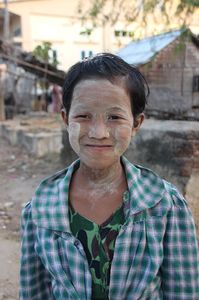Myanmar – ‘The Golden Land’
The Union of Myanmar (previously Burma)
is the largest country in mainland Southeast
Asia with a population of 60 million and
is bordered with India, Bangladesh, China,
Laos and Thailand. There is no other Asian country with such
a vast and varied range of cultural sites,
which include the 3000 standing monuments
at Bagan. Myanmar is mostly tropical and has three
seasons: the hot season, the cold season,
and the monsoon season. Most Burmese live
along the river, hemmed in by mountainous
terrain, and it is still a main highway through
the country. The fishing and agricultural
environment compliments the pagodas and cultural
sites in the river valleys.
Geography
The country covers an area of 677,000 square
kilometres (261,228 square miles) ranging
936 kilometres (581 miles) from east to west
and 2,051 kilometres (1,275 miles) from north
to south, It is a land of hills and valleys
and is rimmed in the north, east and west
by mountain ranges forming a giant horseshoe.
Enclosed within the mountain barriers are
the flat lands of Ayeyarwaddy, Chindwin and
Sittaung River valleys where most of the
country's agricultural land and population
are concentrated.
Capital of Myanmar
Naypyidaw is the capital of Myanmar. On
6 November 2005, the administrative capital
of Burma was officially moved to a greenfield
site 2 miles (3.2 km) west of Pyinmana, and
approximately 200 miles (320 km) north of
Yangon.
Population
There are 135 national races, of which the
main races are Kachin, Kayah, Kayin, Chin,
Bamar, Mon, Rakhine and Shan. The population
is estimated at 60 million with a populations
growth rate of 1.84 percent. Most of the population lives in three great
river valleys encircled by impenetrable horseshoes
of mountains. River life dominates the country
and still to this day forms the main system
of transportation, irrigation and food source.
40% of the population of Mandalay and Yangon
are from the Chan Chinese race.
What many remember most of Burma are the people and their evident spirituality. It has often been said that to be Burmese is to be Buddhist, but the warmth and kindness of the Burmese people is not solely a matter of religion; their happiness and serenity radiates from within.
Culture
Although still under the government of an
unelected military regime, Aung San Suu Kyi,
the Burmese pro-Democracy leader, has recently
given her blessing to the return of tourism
to the country, a move endorsed by the Free
Burma movement. As a result this little-visited
country, offers an untouched treasure trove
of pagodas and temples to explore with minimum
tourists. Myanmar's culture is largely
a result of heavy Indian and Chinese influences
intertwined with local traditions which can
be seen throughout the country, from the
smallest village to the increasingly modern
cities of Yangon (Rangoon) and Mandalay.
|
|











